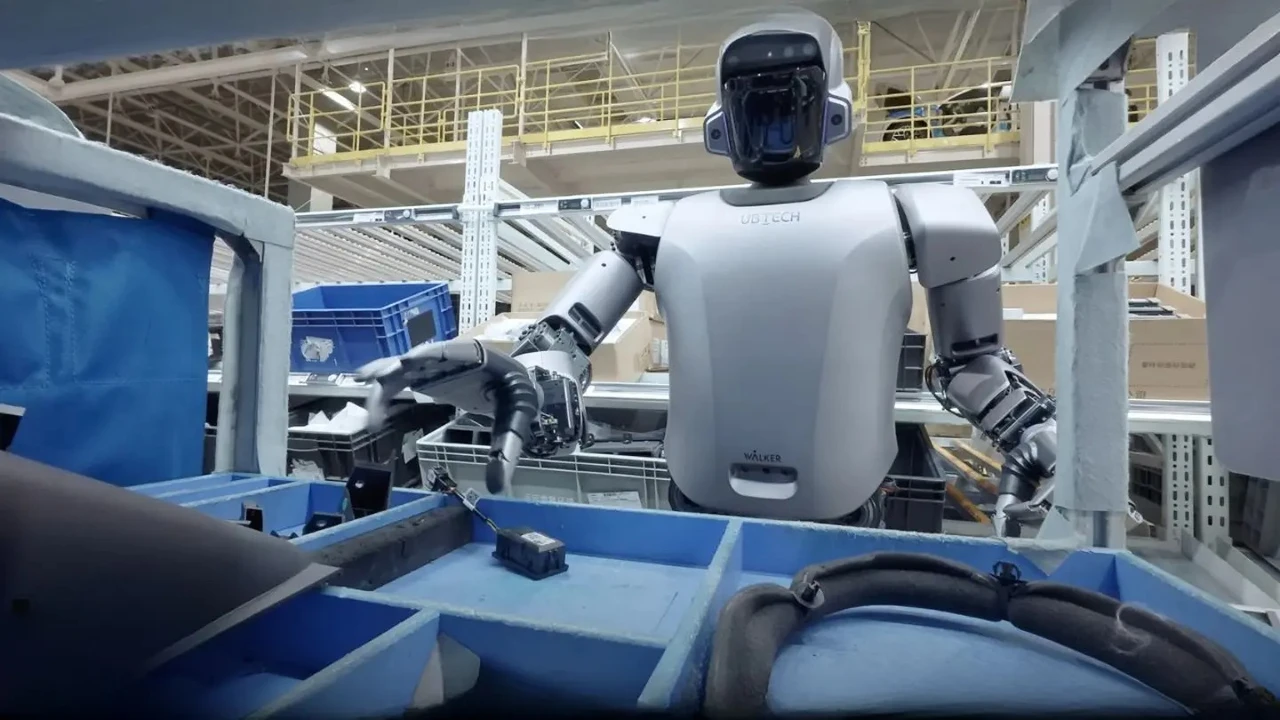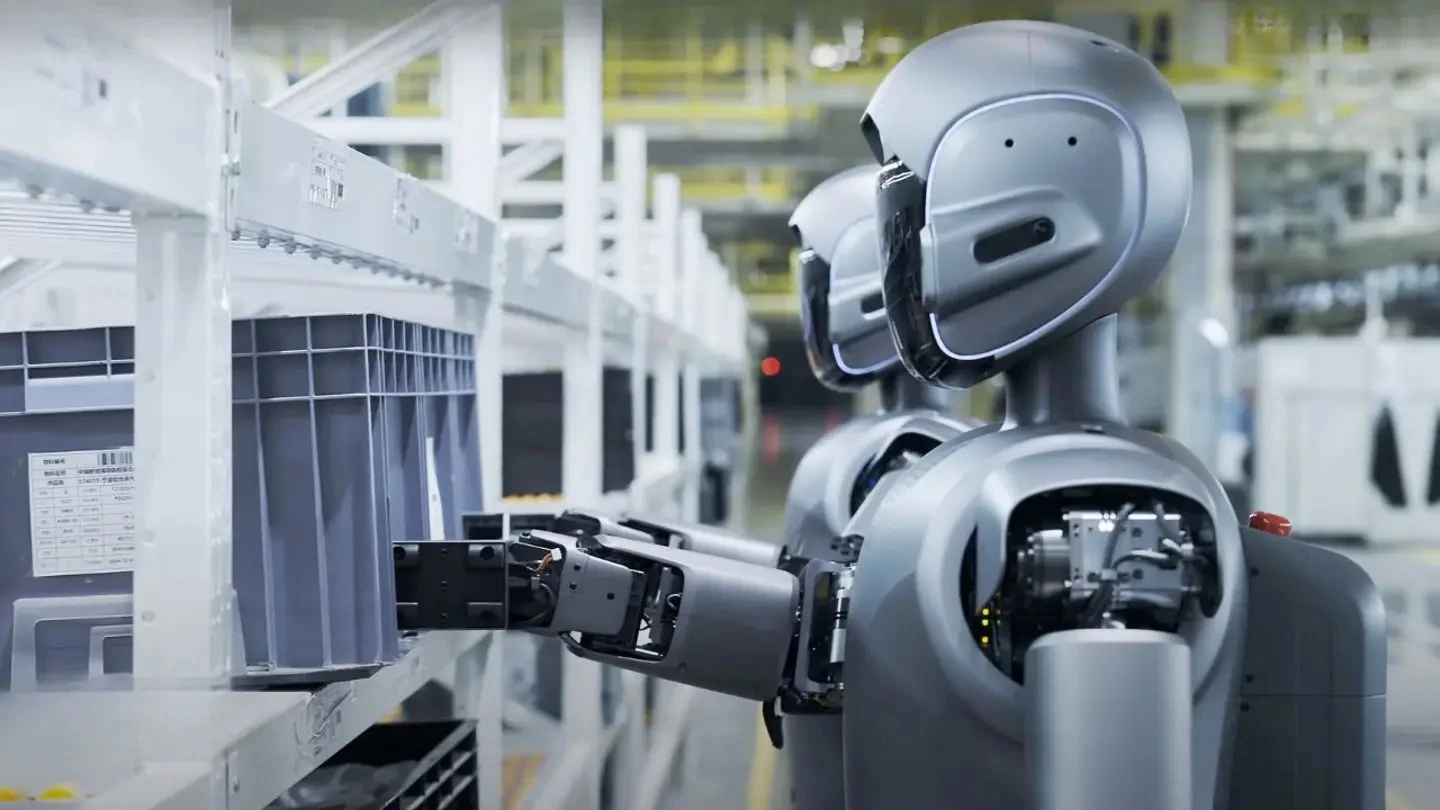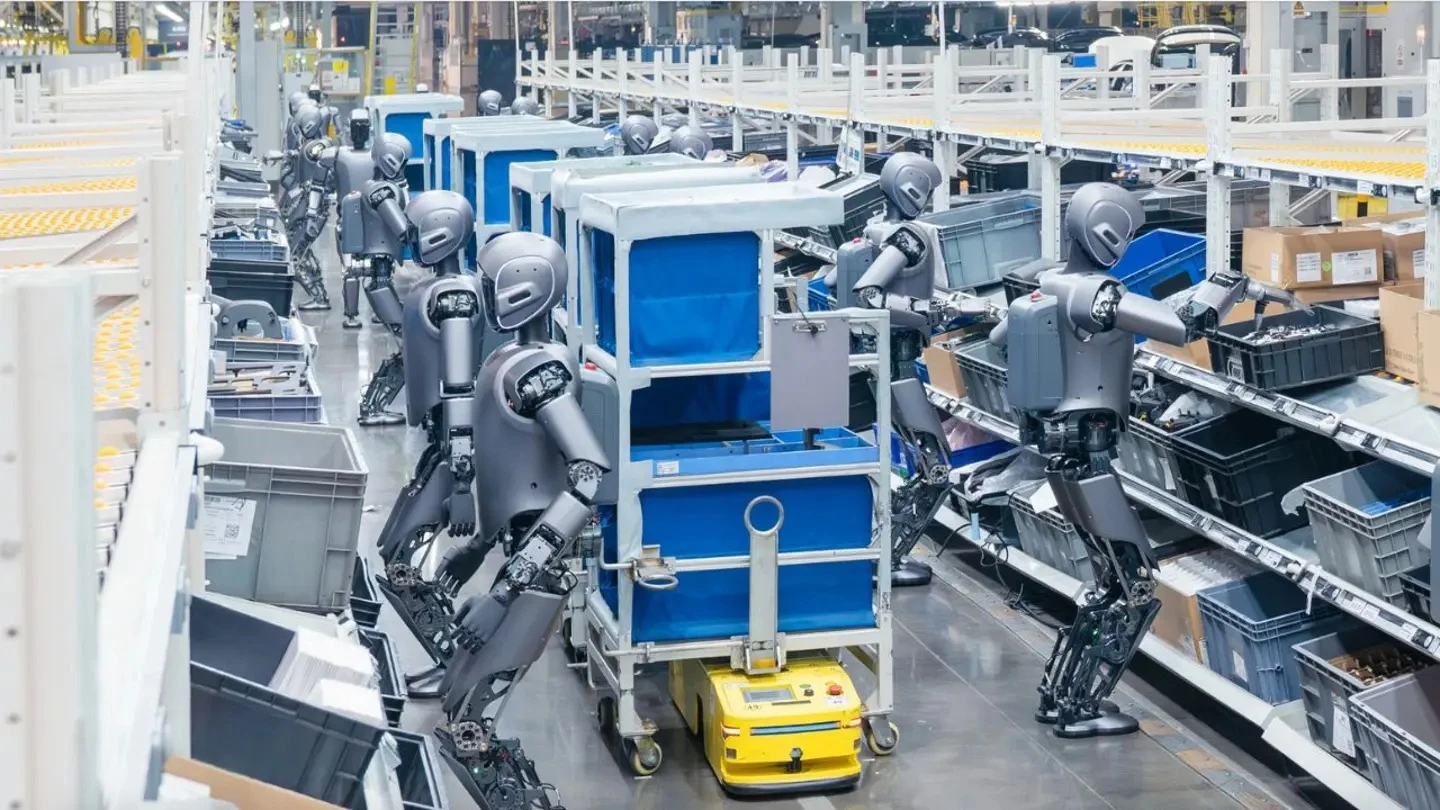Chinese firms set to arm automotive facilities with robots as tests wrap up
 Promotional photo shows UBTech’s Walker S1 humanoid robot operating on an automotive assembly line, accessed on Mar. 26, 2025. (Courtesy of UBTech)
Promotional photo shows UBTech’s Walker S1 humanoid robot operating on an automotive assembly line, accessed on Mar. 26, 2025. (Courtesy of UBTech)
China is preparing to introduce the humanoid robot Walker S1 into automotive production, developed collaboratively by UBTech Robotics and Zeekr, with testing nearing completion and aimed at enhancing speed and precision on factory lines.
Once programmed with specific training routines related to their production line, the robots can replicate the fastest, most precise, and highest-quality outputs recorded. Rather than focusing solely on cost efficiency, their use of advanced artificial intelligence and human-like motion capabilities allows them to stand out with superior speed and precision.

On March 3, UBTech announced that it had successfully conducted the world’s first collaborative practical training program for humanoid robots at Zeekr’s 5G Intelligent Factory.
Are robots replacing humans?
Automation systems, especially in assembly lines, often outperform human labor in terms of speed and accuracy. AI-powered robots are capable of performing millimeter-precision welding, conducting automated quality control processes, and ensuring uninterrupted production flows. Moreover, every step of the process can be logged, allowing for comprehensive external inspection.
This shift is accelerating the handover of certain job functions to robots while redefining the role of human workers in modern factories.
Inspired by collective behavior in nature, this new generation of robotic technology enables multiple humanoid robots to collaborate seamlessly on complex tasks. These robots are not just individual agents—they form an integrated, communicative network that works in harmony.

UBTech’s proprietary BrainNet software links cloud-based intelligence with on-device processing to create a dual-brain system: a “super brain” for high-level decision-making and a “local brain” for real-time, on-site control.
In addition to carrying heavy loads, these robots excel in precision tasks that require fine motor skills and real-time decision-making.
Walker S1 robots are capable of dynamically tracking targets using advanced vision-based perception and hybrid decision-making systems. They optimize sorting tasks by sharing intelligence across the fleet. This phenomenon—known as “swarm intelligence”—involves robots making collective decisions that enhance production speed. While the concept may sound unsettling, it marks a significant leap forward in manufacturing.
Experts note that China’s advances in robotics offer speed, quality, and cost advantages that could position the country as an uncatchable leader in global competition. With rapid progress in electric vehicle manufacturing and the growing integration of robotics, Western automakers are likely to face increasing pressure to adopt similar technologies.



